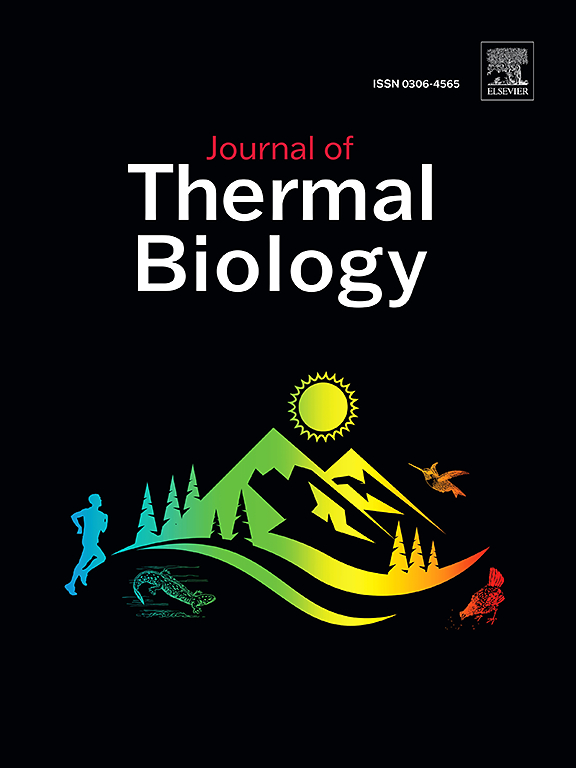发热对两种抗葡萄球菌肠毒素B的中和性单克隆抗体的结合亲和力产生相反的影响
IF 2.9
2区 生物学
Q2 BIOLOGY
引用次数: 0
摘要
耐甲氧西林金黄色葡萄球菌感染是世界范围内发病率和死亡率的主要来源。虽然目前还没有针对这种病原体的疫苗,但使用针对金黄色葡萄球菌关键毒素——葡萄球菌肠毒素B (SEB)的中和性单克隆抗体进行被动治疗在临床上是有效的。此外,发热反应是这种感染的一个关键症状,通常先于SEB抗体治疗或伴随SEB抗体治疗。目的探讨发热温度对SEB与两种治疗性单克隆抗体6D3和14G8免疫复合物形成的影响。结果通过分子动力学模拟、自由结合能计算和表面等离子体共振实验发现,与生理体温310K(37°C)相比,6D3单抗在高热(312K(39°C))下的活性明显降低。相比之下,抗体14G8的结合亲和力受益于较高的温度。结论发热温度对金黄色葡萄球菌单克隆抗体的结合亲和力有不同的影响,给药前合理控制患者体温可增强单克隆抗体的活性。本文章由计算机程序翻译,如有差异,请以英文原文为准。
Fever exerts opposing effects on the binding affinities of two neutralizing monoclonal antibodies against Staphylococcal Enterotoxin B
Rationale
Infections with methicillin-resistant Staphylococcus aureus are a major source of morbidity and mortality worldwide. While no vaccines against this pathogen are yet available, passive therapy with neutralizing monoclonal antibodies against a key S. aureus toxin, the Staphylococcal Enterotoxin B (SEB), can be clinically effective. Further, fever response is a key symptom of this infection, and typically precedes or is concomitant to antibody therapy against SEB.
Objective
To investigate the role of febrile temperatures on the formation of immune complexes between SEB and two therapeutic monoclonal antibodies, 6D3 and 14G8.
Results
Using molecular dynamics simulations, free binding energy calculations and Surface Plasmon Resonance experiments, we reveal that at high fever (i.e. 312K (39 °C), compared to the physiologic body temperature of 310K (37 °C), the activity of 6D3 mAb is markedly reduced. In contrast, the binding affinity of antibody 14G8 benefits from the higher temperature.
Conclusions
Febrile temperatures differentially affect the binding affinities of monoclonal antibodies used in the therapy against S. aureus, and judicious control of the body temperature of the patients before their administration may potentiate their activity.
求助全文
通过发布文献求助,成功后即可免费获取论文全文。
去求助
来源期刊

Journal of thermal biology
生物-动物学
CiteScore
5.30
自引率
7.40%
发文量
196
审稿时长
14.5 weeks
期刊介绍:
The Journal of Thermal Biology publishes articles that advance our knowledge on the ways and mechanisms through which temperature affects man and animals. This includes studies of their responses to these effects and on the ecological consequences. Directly relevant to this theme are:
• The mechanisms of thermal limitation, heat and cold injury, and the resistance of organisms to extremes of temperature
• The mechanisms involved in acclimation, acclimatization and evolutionary adaptation to temperature
• Mechanisms underlying the patterns of hibernation, torpor, dormancy, aestivation and diapause
• Effects of temperature on reproduction and development, growth, ageing and life-span
• Studies on modelling heat transfer between organisms and their environment
• The contributions of temperature to effects of climate change on animal species and man
• Studies of conservation biology and physiology related to temperature
• Behavioural and physiological regulation of body temperature including its pathophysiology and fever
• Medical applications of hypo- and hyperthermia
Article types:
• Original articles
• Review articles
 求助内容:
求助内容: 应助结果提醒方式:
应助结果提醒方式:


